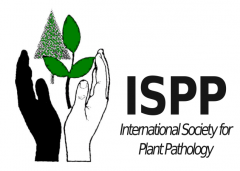FIRST REPORT OF TOMATO SPOTTED WILT VIRUS IN HOT PEPPER IN PAKISTAN
M. Ashfaq, A. Ahmad
doi: 10.4454/jpp.v99i1.3791
Abstract:
Tomato spotted wilt virus (TSWV, genus Tospovirus) is one of the most devastating plant viruses which is known to infect several plant species in more than 84 different plant families (Parrella et al., 2003). In June 2014, five hot pepper (Capsicum annuum L.) leaf samples showing chlorosis, chlorotic spots and tip necrosis were collected from Islamabad district. All symptomatic samples were tested positive for TSWV by using TSWV-specific AgriStrip assay (Bioreba AG, Switzerland) whereas two leaf samples from healthy plants were negative. The presence of TSWV in pepper samples was further confirmed by RT-PCR using TSWV-specific primers CP5- Bam and CP3-Pst (Antignus et al., 1997). All five PCR amplicons were purified using QIAquick® PCR purification kit (Qiagen) and subsequently sequenced in both orientations. A total of 777 nucleotides of nucleocapsid protein (N) gene were obtained from each amplicon. All five sequences were 100% identical and the sequence of TSWV isolate hot pepper (AAICPK) from Pakistan was submitted to GenBank as Accession No. KX121046. BLAST analysis revealed 99% sequence identity with TSWV pepper isolates from France (FR693046), Hungary (KJ649612), Italy (GU369717, GU369722, DQ431238) and South Korea (HQ260982, HQ267713). This destructive virus has been previously reported to infect tomato crops in Pakistan (Hassan, 1995). To the best of our knowledge, this is the first confirmed report of TSWV in hot pepper crops in Pakistan.




